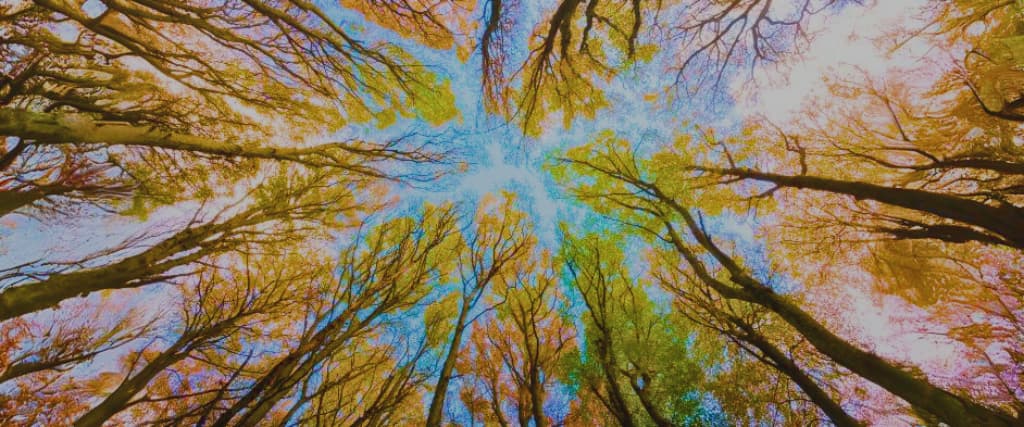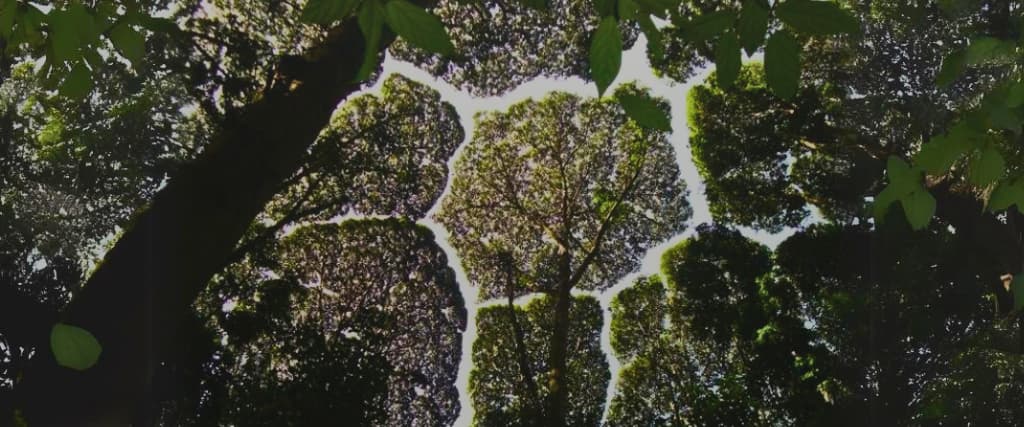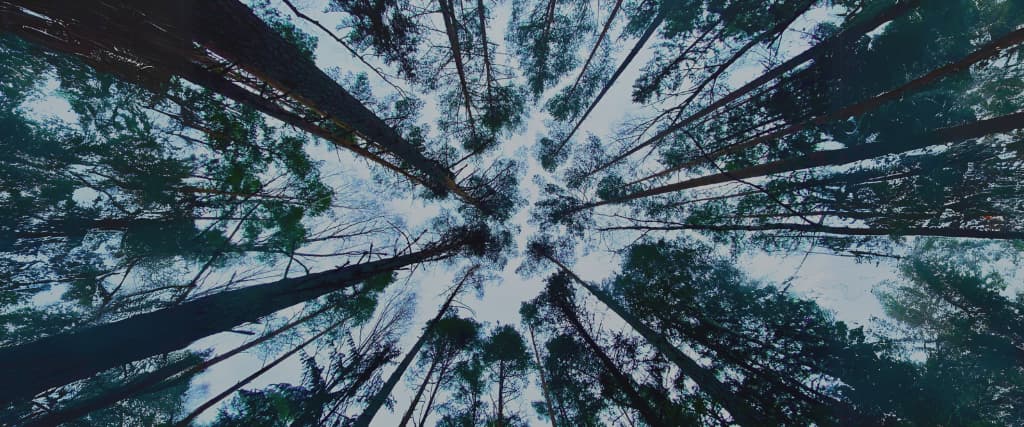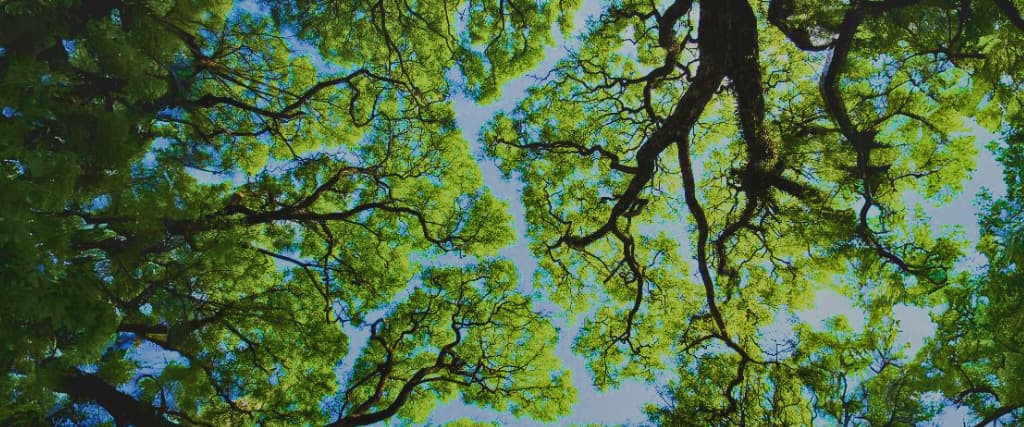Canopy disengagement, or Crown shyness, is a fascinating natural phenomenon where the crowns of the trees try to stay away from each other’s presence. In certain instances, the trees canopies make a mosaic such as branches and leaves with visible spaces between them.
This idea first received the limelight in the early 1920s; that being the case, it’s something not so many would have discovered. Later in the 1950s, the term tree shyness picked up, having been given existence by Maxwell R. Jacobs, a well-known botanist.
In this post, we’ll look at some of Crown Shyness causes and Crown shyness examples. So without further ado, let’s get straight into it.
Causes of Crown shyness

- Insects and disease -Many botanists believe that trees have taken an evolutionary step to see the spread of pathogenic fungi, bacteria, and insects, mainly on tree canopies. The main plan is to ensure that there won’t be significant bridges between trees and the canopies by seeing gaps between trees.
- Photosynthesis – Many people also believe that this phenomenon results from photosynthesis. When a neighboring tree shades a section of the tree’s canopy, the other tree becomes stagnant and doesn’t continue to grow, which eventually leads to a gap.
- Injury to the tree – During windy seasons, trees tend to sway around, and sooner or later, they’ll collide with neighboring trees if the significance of the space between them is thin. If it happens, the twigs will be disrupted and shake the canopy, leading to significant spaces between the trees.
- Allelopathy – This concept explains that neighboring trees often communicate through chemical compounds. If this is true, each tree lets the other know it’s at the right stage, and they all stop growing in a particular section.
Crown Shyness Examples
1. Canopy of Borneo Camphor Trees

Borneo Camphor or Kapur tree is a tremendously huge tree that grows up to 60 meters in height. And since it’s among the Dipterocarpaceae family, it is regarded as a tropical rainforest tree appreciated for its resin production and hardwood. The name aromatic(species name) has been picked directly from its bark resin production, prized by Arab and Indian merchants higher than gold.
Kapur tree dispensation in Peninsular Malaysia, Sumatera, and Borneo are limited. They still demonstrate crown shyness even if they grow in clusters. All these results from limited space among the canopies as they don’t overlap, eventually leading to the sky jigsaw pattern.
From a distance, you can spot the natural phenomenon from the Malaysia Forest Research Institute. On the other hand, you can spot these unique trees from the Rimba IImu, KL Gate, and the Geology Department.
2. Some Species of Eucalyptus

Eucalyptus is the home of more than seven hundred species of trees, mallees, or shrubs in the Myrtaceae family. Similarly, numerous genera in the Eucalypteae tribe, such as the Corymbia, are referred to as eucalypts.
Numerous plants linked to the Eucalyptus genus consist of bark fibrous, smooth, stringy or hard, oil glands, leaves, petals, and sepal that are integrated to make an operculum or cap on the stamens. Similarly, theres a woody fruit capsule that’s known as a gumnut.
Furthermore, many Eucalyptus species are mainly from native Australia, and each territory and state comes with its species representatives. The Australian forests mainly consist of eucalypt, and since the Australian forest is prevalent for wildfire, the eucalypt species have gotten used to these conditions. That means they have seeds that can adapt and survive a wildfire
3. Pinus Contorta

Pinus Contorta, mainly known as shore pine or lodgepole, contorta pine, or twisted pine, is a chronic tree on the western side of North America. Their prevalence in the lowland forests is relatively low.
Similarly, the Pinus contorta germinates into a tree or an evergreen shrub, depending on the subspecies. It comes in the form of Krummholz, which is said to be 1-3 meters high(3-10 ft). However, the narrow and thin tree can grow to 130-160 ft (40-50 m) which can later be 7 ft (2m) based on the diameter.
4. Avicennia Germinans

The black mangrove, better known as the Avicennia germinans, is a uniquely tiny tree or shrub that grows up to 39 feet( 12 meters) in Acanthaceae, which is in the acanthus family. It’s prevalent in subtropical and tropical regions of America on the Pacific Coast and the Atlantic. Similarly, you can find it in Africa on the Atlantic tropical coast, where it does well due to the muddy and sandy shores.
Moreover, the Avicennia Germinans are also habitual along Florida and the Texas coastal regions and stretch beyond coastal Georgia and Southern Louisiana located in the US.

And just like numerous mangrove species, the Avicennia majorly reproduces through vivipary. Its seed is mainly enclosed within a fruit, showcasing the grown seedling when submerged in water.
However, the Avicennia Germinans don’t germinate on prop roots like numerous mangrove species but have pneumatophores that enable the roots to breathe when in water effectively. Its referred to as a hardy species since it ensures the emission of absorbed salt from its unique leathery leaves.
